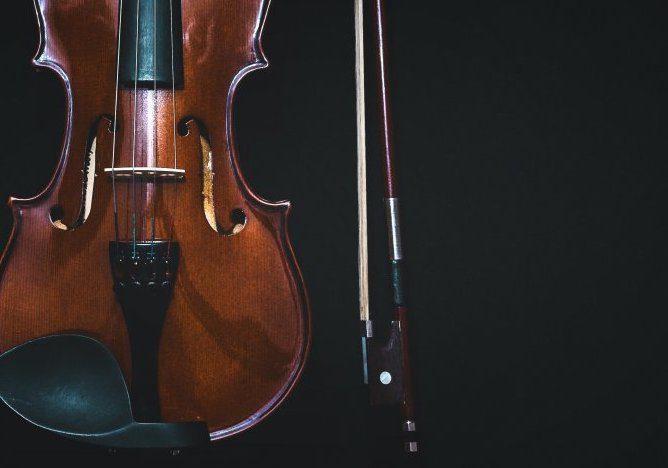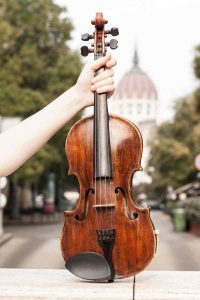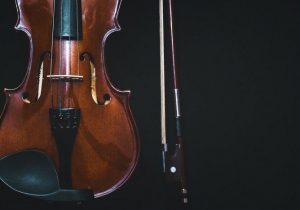While new is not always better than old when it comes to choosing a violin, this is a deeply personal choice that requires time and patience. Each individual violinist is looking and listening for very specific traits and characteristics in a violin’s tone and projection. This critical search will also depend on the level of the violinist and what, specifically, the individual is looking for. Violins are like human beings in that each has its own one-of-a-kind, unique voice.When one is comparing an aged violin to a newer model, the quality of the instruments must first be appraised.
It is only fair to compare older vs. newer violins that are grouped into the same price range by a reputable and experienced dealer, or luthier. If an older instrument has been cared for properly, stored in a controlled environment with regards to temperature and humidity, has no damage, and has been played regularly, the tone of this instrument will be mature and developed. Violins that have been around for years and years can have vibrancy, life, and magic in their bodies!
The Magic of Playing an Old Violin
New violins are sold at a discounted price as compared to older instruments because the new violin’s tone is not yet developed. One cannot yet know the possibilities of tonal range of a new instrument when it is first made. A new violin’s tone, played on regularly by an experienced violinist will improve thirty to fifty percent over a period of six months to a year. This may not compare in value to an older violin having been played on for many years.
A great analogy was shared with me by violinmaker Endre Fischer of The Long Island Violin Shop in Huntington, NY. He says, “ I liken new violins to new shoes. They look great but they need to be broken in so your feet can feel good in them.”
An aged violin that is played on regularly will still improve in tone, but not as dramatically as on a new violin. An old violin will have a more mellow tone that has harmonized over time. Charles Rufino, violin luthier, and owner of The Long Island Violin Shop gave me another favorite analogy: You make a delicious stew and eat it that day. You save leftovers in the fridge overnight and by the next day, the ingredients of the stew have molded together. It tastes better the second day! This ‘second day’ flavorful stew is the ‘old violin.’ It’s been broken in! Warmed up! A more harmonized, mature tone!
New Violins, On the Other Hand…
A new violin, however, may be healthier than an old violin. Again, you should always work with an experienced violin dealer whom you can trust. Old and new violins should be appraised by a trustworthy violin dealer that can spot problems in a violin’s condition with a trained eye. Any violin, regardless of its age, can have problems that you cannot see. An experienced violin dealer will be able to spot problems and assess and repair any damage skillfully. The violin should have a good setup. This includes the pegs, fingerboard, tailpiece, and endpin. It can be quite costly to repair the setup of a violin as this is, according to Charles Rufino, the “plumbing, wiring, and heating of the instrument.”
Choosing Any Instrument is a Deeply Personal Experience
Choosing a violin, old or new, is a deeply personal experience. To generalize which is better: ‘old violins’ vs. ‘new violins’, is not really possible. The choice will be different for each violinist. The first category that will immediately limit the possibilities of choosing an instrument will be ‘the cost.’ Fine old instruments are often exorbitantly expensive. This could be due to the name of the violinmaker or specific violin-making school or style. It could be impacted by the country it is from or the time period the instrument was made in. It can be influenced by how much money the luthier’s instruments are selling for. And of course, how the instrument has been preserved and cared for.
Just because an instrument is old or new, does not mean it is valuable. Ninety-nine percent of the time, an uneducated buyer finds an old violin in a garage sale, it is a gamble. You can get lucky, or not. You should always try out and buy violins from someone you can trust, an experienced and knowledgeable violin dealer. It is not a good idea to buy a violin on eBay, Amazon, or even necessarily from a teacher. It is best to buy a violin from a shop where you can have a relationship with a trusted dealer that can help you properly care for your instrument. And can offer you an exchange if you are not happy with your purchase.
What is an Acceptable Price for a Violin?
What is an acceptable price to pay for a violin? Most people do not realize how expensive buying a violin or any other stringed instrument can be. Violins are very expensive to make and repair. You need a highly skilled and experienced craftsman to care properly for your instrument. You also need to buy a bow separately. This can be expensive unless you are buying a student model violin outfit.
A good process to follow when beginning your quest to find the perfect violin for you:
- Figure out your budget for a violin and bow.
- Find and work with an experienced, highly trained violin dealer whom you can trust.
- Try as many violins in your price range as possible for a substantial amount of time. Ideally, you should compare 2-4 violins at a time played by yourself and another experienced violinist (so you can hear them) for a couple of weeks in various acoustical locations. Different locations may include a small practice room, a larger room, a concert hall, etc.
- It is also important to try violins with a limited number of bows: 1 or 2 bows at a time because violins pair nicely with specific bows.
Tone, Projection, & Variance of Color
Violinists usually compare violins based on the quality of tone, projection, and variance of tone color. These traits are much more important than the physical appearance of the instrument. Certain parts of the instrument can be changed including the pegs, chinrest, and tailpiece if you so desire. Similarly, a violinmaker can make adjustments to push the tone in one direction or another according to the violinist’s preferences. ‘New’ violins have been said to be ‘louder under your ear’ than ‘old’ violins as you play them. Is louder necessarily better? Again, this is a personal preference. What is more important than a ‘loud’ tone is the ability of the instrument to project various colors of tone. The quality of the sound matters!
Another facet of: ‘New’ vs. ‘Old’ Violin: Which is better? is the idea that a professional violinist may own more than one instrument to suit the genre he/she is playing in. Violinists generally have more than one bow for this same reason as well as it being a backup. A soloist playing with an orchestra will need a violin that projects and cuts through the collective tone of the orchestra. A chamber player will need an instrument that blends well with his/her fellow chamber musicians. Similar situations arise for the orchestral violinist, the pit player, and the outdoor player. Violinists might own an ‘old’ instrument for certain types of playing and a ‘new’ violin for other types.
Of Course, Finding the Right Violin is a Personal Choice
Finally, there have been experiments done in different locations around the world by violin makers and scientists in which notable soloists were asked to blindly evaluate ‘old’ and ‘new’ violins as they were played and note their personal preferences. The players were mostly inaccurate in judging whether the violins were old or new.
‘Old’ or ‘New’ Violin?: Don’t settle until you find your own personal voice!
Jennifer Malanowski


